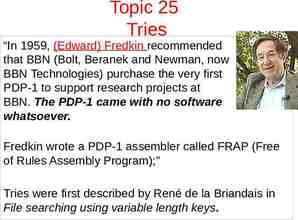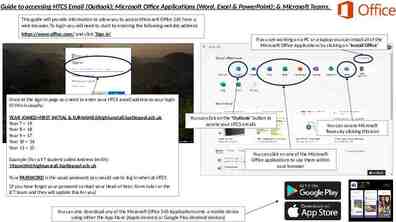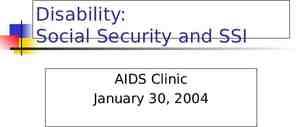Right-Sizing Your Request Handling System Juli Haugen, Jason Pelletier
21 Slides1.79 MB

Right-Sizing Your Request Handling System Juli Haugen, Jason Pelletier (Bowdoin College) Anne Pinkowski, Chris Lundin (Stanford University) October 2008

Comparison of Institutions Bowdoin Stanford 1,700 14,000 Faculty and Staff 800 12,000 Buildings 120 450 Acreage 215 8,180 Students Focus Tuition (07/08) Undergraduate Undergraduate , Liberal Arts and Graduate Education, Research 46,200 45,608

Request Tracking at Bowdoin: Prior to 2001 - Homegrown Filemaker Database 2001 to 2004 – Switch to Remedy version 5 installed on a Linux server. 2004 – Upgrade to Remedy version 6, move to Windows 2003 server, reassignment of Remedy support person. March 2008 – The big move to Altiris Help Desk!

Request Tracking at Stanford: 1988: Mainframe-based in-house developed system 1997: Remedy Action Request System: built custom “HelpSU” ticketing application 2000: CIO declared Remedy required for all IT Services groups 2004: Replaced custom “HelpSU” with BMC Remedy Help Desk 5.5 (retaining HelpSU brand name) 2008: Replaced Help Desk 5.5 with Remedy Service Desk 7.01 2008 and beyond: Moving forward with BMC Remedy IT Service Management suite 2009: Upgrade to ARS 7.1 CMDB 2.1 and propagate with core infrastructure equipment. 2010: BMC Change Management: Change is good!

Application Profile: Bowdoin The Altiris application is the tracking system for the Information Technology division at the College. All central IT Staff are expected to use it for both internal and external requests. We own 25 concurrent user licenses. Bowdoin is also using Altiris deployment and notification server.

Application Profile: Stanford The Remedy application is the central request-tracking system for the University. It is centrally funded and there is no price barrier to participation. It is used by both central business offices and distributed IT support staff. It supports secure data groups (Payroll, HR, Benefits) as well as non-secure data groups. Growth and mainstream adoption continues. 125 fixed licenses and 138 floating licenses for use for 1200 users 8 users per license.

Activity Levels Bowdoin Stanford Campus Computers 2,100 35,000 Incidents/ Month 1,300 18,000 Support staff using application 50 1,200 Number of support groups (queues) 15 300

Bowdoin’s Considerations and Requirements Sustainability The need to find a tool that did not require a fulltime developer. Wanted to increase services on Customer side. Nearing the license renewal for Remedy Already using Altiris for imaging and software deployment. After 7 years it was just time to revaluate. Wanted to include all IT staff in decision.

Bowdoin’s Selection Criteria

Stanford’s Considerations and Requirements Desired Integrated IT Service Management Suite – Best-of-breed nixed because of complexity of integration and interoperability – Move to ITIL-based processes – Applications and processes are optimized for usability, extensibility, and maintainability – Non-IT usage would piggy-back on top of ITSM functionality, as it had been. Staff technical knowledge and experience – Stanford has a Remedy-knowledgeable development staff – 10 years experience with Remedy on campus – One platform decreases overall administrative overhead Scalability – System able to handle Stanford’s volume of help requests, system change requests and CMDB updates.

And your selection, please! Bowdoin Stanford Application Altiris Help Desk 6.06 Remedy Service Desk 7.01 Clients Browser (Windows IE only) Remedy User client and Web for Windows, Web access for IE/Firefox on Mac and Linux Authentication NTLM or Windows login Single-sign-on, Kerberos Back-end Database Microsoft SQL server version 5 Oracle 10gR2 Front-end Windows Server 2003 RedHat Linux on all three tiers: application, web and DB

Migration Challenges/Decisions Bowdoin Stanford What to do with old Did not import old incident data? data. Convert it to new format: 1 million records Defining new business processes Adjust to new application, customize where necessary Implement a few processes and continually add and refine. When to transition? Mid-semester Long 3-day weekend, midquarter Support staff orientation Online training, Altiris tip of the week, Group training, individual training Auditorium demos, WebEx session, drop-in sessions Documentation Tip of the week archives, Quick Start guides. Quick web pages w/screen shots. Now have full User Guide.

Architecting for Growth: Bowdoin

Architecting for Growth: Stanford F5 BigIP 1500 Load Balancer Midtier 7.0.1 patch 6 Apache Tomcat CI Viewer r7-mid1 RH AS 4 AR System 7.0.1 patch 4 Email Engine 7.0.1 patch 4 Approval Server 7.0.1 patch 4 Assignment Engine 7.0.1 patch 1 CMDB 2.0.1 patch 3 Incident Management 7.0.3 patch 6 Problem Management 7.0.3 patch 6 Asset Management 7.0.3 patch 6 SLM 7.0.3 Flahboards 7.0.1 AR Performance Encryption Midtier 7.0.1 patch 6 Apache Tomcat CI Viewer r7-mid2 RH AS 4 AR System 7.0.1 patch 4 Email Engine 7.0.1 patch 4 Approval Server 7.0.1 patch 4 Assignment Engine 7.0.1 patch 4 CMDB 2.0.1 patch 3 Incident Management 7.0.3 patch 6 Problem Management 7.0.3 patch 6 Asset Management 7.0.3 patch 6 SLM 7.0.3 Flahboards 7.0.1 AR Performance Encryption F5 BigIP 1500 Load Balancer r7-app1 RH AS 4 NOTES r7-app2 RH AS 4 ARS1DEV RH AS 4 Oracle 10g All Midtier and Application servers are Dell 1950 quad core Intel Xeon 3 GHz, With 8gb ram

Has Bowdoin made the right decision? Overall IT staff have had positive feedback. There was minimal client impact – only the online ticket submission form looked different. The number of tickets being entered by groups that were “Remedy resistant”have increased. More Internal IT requests are being handled through tickets. So far we have been able to say “Yes we can!” to all IT requested changes and additions to Altiris. “Altiris is fabulous!!!! I have been entering the pre-loaded parts of the CAP installs this afternoon and it has gone very smoothly. What would have taken me at least a two weeks to do (an hour or two a day) has been done in just a few hours. I anticipate finishing the pre-load tomorrow morning. Special thanks to Jason who created the templates which save so much time and also who quickly answered my questions and found fixes for one or two small quirks.” – Sue Davies, Executive Assistant to the CIO.

ITIL at Stanford: A Long (and Winding?) Road 2002: Leaders began education 2002: Change Advisory Board (CAB) established 2004: Infra Change Management application installed 2006: IT Service Desk created 2006: Incident and Problem Management process drafted 2008: BMC Remedy Service Desk 7.01 installed 2008: CMDB Implementation Project chartered 2008: IT Operations Center to activate Incident and Problem Management process 2008: Propagate CMDB and Asset Management modules with CIs 2008: ITIL training for managers and selected staff 2009: Replace existing Change Management application with Remedy: Remember – Change is good!

Using a Single Enterprise-Wide Application Pros: – Single interface for all support staff – Single client-facing interface (acknowledgements, notifications) – ITIL processes can be taught relative to a single application – Easy transfer of requests (change, incident, problem) from support group to support group – Unified reporting across all support groups using a single classification hierarchy. – It’s easier to hire and retain knowledgeable Application Administration/Development staff being on a single platform. – As a suite, application upgrades don’t impact the complexity of integrations with other applications.

Using A Single Enterprise-Wide Application Cons – Non-IT groups see/hear language which is more IT related (“incidents”, “impact”) – Single interface means we have to say “no” to some niche requests, e.g. Student ID Numbers – Single classification hierarchy takes work to maintain and “keep the lid on”.

Future Plans: Bowdoin Appoint Altiris administrator for each IT group. With new version reported additional campus groups could have access (payroll, HR, OneCard, library) Browser independency Increased implementation of ITIL standards.

Future Plans: Stanford 2008 and beyond: Moving forward with BMC Remedy IT Service Management suite 2009: Upgrade to ARS 7.1 CMDB 2.1 and propagate CMDB with core infrastructure equipment. 2010: Implement BMC Change Management: Change is good!

Questions About Right-Sizing Your Request Handling System? Bowdoin College Juli Haugen, Jason Pelletier [email protected], [email protected] Stanford University Anne Pinkowski, Chris Lundin [email protected], [email protected] October 2008






